10 Must Visit Places in Croatia
Croatia has a lot of sights to see, experience and do. Here are 10 Must Visit Places in Croatia that you should not miss –
1. Dubrovnik and GOT in Croatia
Dubrovnik is nicknamed “Pearl of the Adriatic”. Tourism is the most important industry in Dubrovnik. This coastal town of Croatia transforms into a fantasy world in the Game of Thrones. It becomes Kings Landing, the capital of the Westeros.
Dubrovnik was the main location for filming in Croatia for King’s Landing, the fictional city in Game of Thrones. This as you know, is a famous television series based on the fantasy novels of ‘A Song of Ice and Fire’.
With a base such as that of the Old Town of Dubrovnik, no special measures were necessary for scenery or special effects. It fit beautifully as the scenic fortified port city of King’s Landing, a stronghold of the Lannister family.
GoT and Dubrovnik through the Seasons
Since Season 2, it has morphed into Kings Landing and even Qarth for a season which was shot in the Lokrum Island. And it is not just a location, but virtually a nucleus of the show. Every powerful character has had a tryst with Kings Landing as dramatic scenes have been filmed here.
Some of the Game of Thrones series set locations in Dubrovnik
Fort Lovrijenac
This majestic looking fort is located in the Old Town of Dubrovnik, and doubles as the Red Keep in King’s Landing in the Game of Thrones series.
Spanish steps
Arguably the most famous scene in Game of Thrones was filmed on the imposing Spanish steps of Dubrovnik. Cue Cersei looking down on the disapproving crowd from the top of a large stairway. Then imagine her walking through the streets of Kings Landing to the Red Keep, as a woman screams “shame” in her ear.
Minčeta Tower
Often referred to as the most beautiful fort in Dubrovnik, Minčeta Tower is regarded as the symbol of the city. It’s no wonder that such a magnificent building would be the setting for the House of Undying in Game of Thrones. The base of Minčeta Tower is where Daenerys Targaryen searches for her stolen dragons in Season two.
The Ethnographic Museum of Dubrovnik
A naughty little place called Littlefinger’s brothel that appeared in Season 4.
Those who have seen and are passionate about the series, must visit Dubrovnik for the sense of déjà vu.
2. Rastoke Village, Croatia

This is a little village near the city of Slunj, Croatia that must not be missed. A small rural settlement with stunning landscapes, water mills, waterfalls, and wooden houses. There are probably as many waterfalls as there are houses. Rastoke is a name that has different meanings. The term generally refers to the branching of rivers. Many beautiful waterfalls, water wheels, wooden houses, ponds. A slice of Heaven on earth.
It offers a peaceful environment for a day of sitting by the water and sipping on coffee, fishing or just hiking in the forest. The village is known for the flour mills and homes built in traditional architectural style, it has grown as the edge of a robust waterfall where the Korana and Slunjcica rivers meet. These waters flow around and into the village, which creates numerous streams and pools. in the olden times, the region around Slunj was known as no man’s land, an uncertain border region between Europe and the Ottoman Empire.
Rastoke and the War
When Croatia was in the midst of the war from 1991 to 1995, the region was one of the hardest hit. The entire village was horribly damaged. Homes were burnt down and the surrounding area was loaded with landmines and explosives. Since then, the Government has carried out a successful restoration program here. The scars of war have now healed and have been replaced by pleasant walks around the village. The flora and fauna and the soothing rhythms of incessantly flowing water make the walks delightful.
A perfect location for a bike ride, to explore the lush green region. Or maybe hike up the pine forests to venture out on an adventure hunt in the nearby hidden caves. If you are mesmerized by the water, you can go on a fishing spree or go rafting along the water’s edge.
3. Sunset in Zadar, Croatia
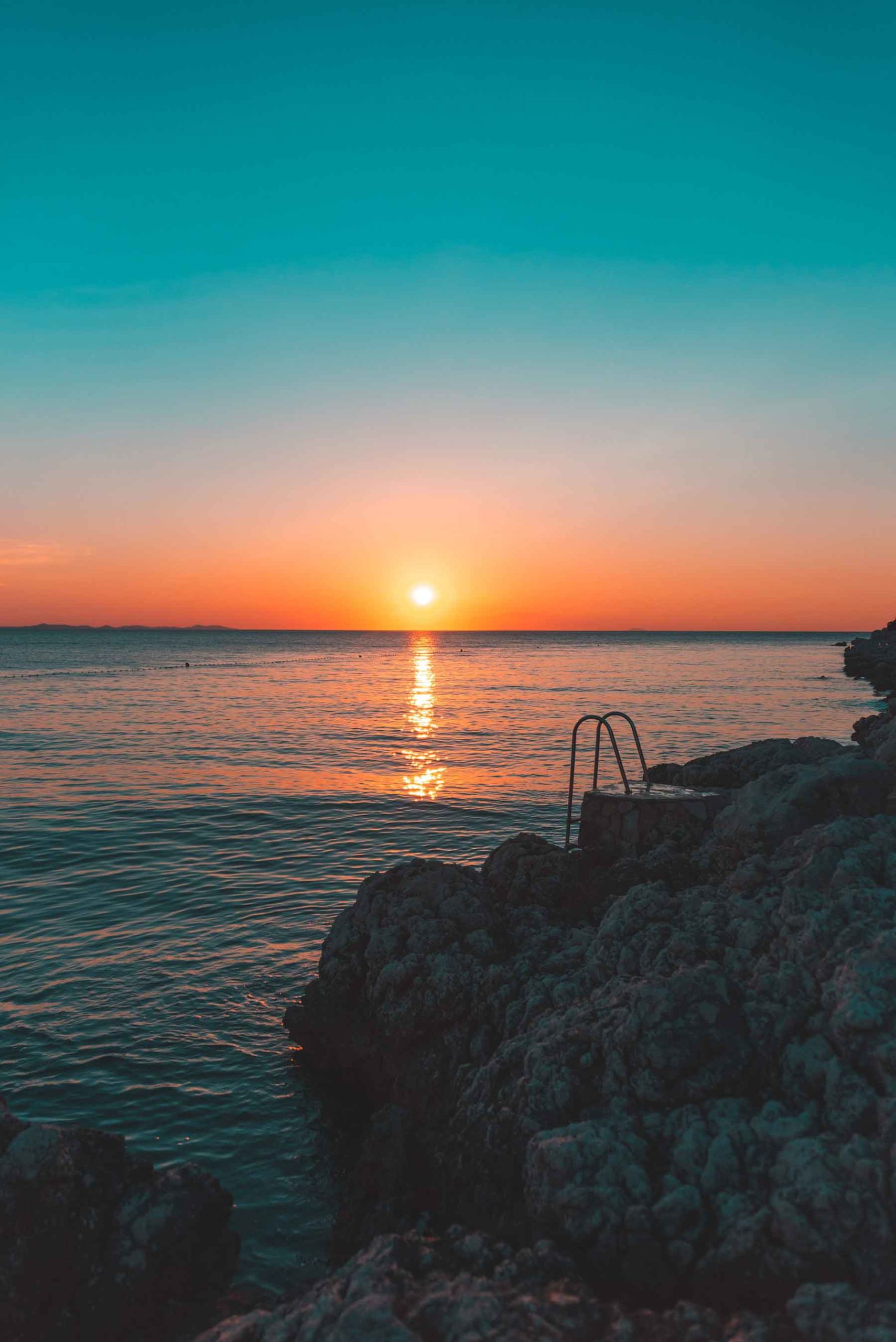
People say the best things in life come for free. The famous director Alfred Hitchcock described the sunset of Zadar in the following words “It must be the most beautiful sunset in the world”. You must admit that Hitchcock had an eye for a good shot. Spectacular colors and the sound of the sea organ will leave you breathless.
Zadar completely changes as the sun goes down. The colors are richer the light is more beautiful. The most preferred spot to watch the sunset is at the steps of the Sea Organ, where you will be treated to both a sound and light show. One of the best places to take some of the wonderful photographs of the sunset.
The sunset is also well known as the Hitchcock’s sunset. Who are we to dispute the Master?
4. Varazdin, Croatia

A city that is the centre of Tourism, Culture, Economic, Educational and Sporting center of North-western Croatia. Varazdin is about the magic of angels and magical events. The city is mostly visited for its Cemetery – created in the 20th century that is home to glorious intricate garden architecture. The fortified town was home to the aristocrats back in the day, which turned it into a city center for high society and its culture.
The cemetery of Varazdin
This cemetery is considered to be the most beautiful one in Europe. Established in 1773, the landscape architecture and natural monuments began to look at these pretty hundreds of years ago. The most sought out, rather the most valuable monument is the statue of the “Angel of Death” by Robert Franges Mihanovic, symbolizing the farewell of the living with the dead. Franges Mihanovic managed to turn a peaceful resting place into a beautiful park for the tourists. It has also become a ground for the Croatian sculptors to showcase their work to the people. The cemetery is divided into new and the old, characterized by the French park effect.
Museum of Angles – Angels have become a symbol of Varazdin, the city where the angles sleep.
5. Sphinx of Split, Croatia

Emperor Diocletian, the founder of Split City was the one who the Sphinx into the city. The sphinx’s served as a reminder of the culture and the religion followed in Egypt. The Sphinx was stolen by the emperor and bought into the city. The Sphinx is the keeper of the Pharaoh’s tomb and that fascinated the emperor and proved him to bring it into his city. The people of Split on the death of the emperor – went on to destroy all the pagan symbols including the Sphinx as he had ordered during his rein the execution of the Christians. The people being barbaric – at the first chance they got going on to destroying the treasures of Egyptian history.
The one Sphinx that can be seen in Peristyle is the last one that stands – the sphinx is made out of Black granite. How this one survived the barbaric act of destruction is a mystery till date.
The lady has been sitting out there from the 3 rd century, so if you manage to pass by the area, don’t forget to pay your respects.
6. Gregory of Nin
Touch the toe of the statue of Gregory of Nin in the old town of Split for good luck.

The bishop in the medieval Croatian capital of Nin, Gregory of Nin, is known as a rebel for defying the Catholic church. The Church opposed his call to introduce the national language into religious services in 926 so that worshipers would better understand the word of God. A man who managed to leave a major mark on the country’s culture and history.
Gregory of Nin became an important part of the Croatian culture, he is known for being the defender of the Croatian culture, Language and Statehood. His memorials can be found all around the city. He was one who would only hold the services and ceremonies in the national language rather than in Latin.
Gregory of Nin and what he means for Croatia
The people of Croatia see him as a symbol of pride and a national treasure. To be honest, the man deserves a statue, he is one who changed the face of religion in the country.
The 25-foot statue that is in deep bronze color and the toe of the statue is golden, the locals around there believe that “rubbing Gregory’s big toe” will grant them their wish, and he has been credited with births, weddings, and riches.
7. Kairos – God of Happiness
At St. Nicholas in Trogir, a 900+-year-old convent run by the Benedictine nuns, the most prominent place is held by the Famous marble relief of Kairos, The youngest son of Zeus- from the 3rd Century BC.
According to the Greeks rather Greek mythology, God Kairos passes by mortals, always in a hurry and gives them an opportunity – a “Happy Moment” – to one who manages to catch his hair bunch.
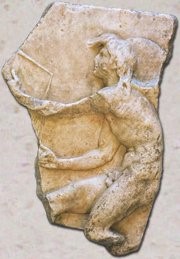 He is known as the God of the Happy Moment, a Favourable Opportunity. He signifies a moment in time wherein something special happens. Kairos is the God of The right Time, Opportune Time or Seasonable Time. It is a perfect time, the qualitative time, the perfect moment, the “now.” Such a moment must be grasped; otherwise, the moment is gone and you cannot cannot re-capture it. In the midst of the ordinary time Kronos, extraordinary time kairos happens.
He is known as the God of the Happy Moment, a Favourable Opportunity. He signifies a moment in time wherein something special happens. Kairos is the God of The right Time, Opportune Time or Seasonable Time. It is a perfect time, the qualitative time, the perfect moment, the “now.” Such a moment must be grasped; otherwise, the moment is gone and you cannot cannot re-capture it. In the midst of the ordinary time Kronos, extraordinary time kairos happens.
Kairos – Mythology and Philosophy
Kairos is the youngest son of Zeus. He is represented as a young and beautiful God. Kairos is a perfect example of “Bygones are bygones”- the beauty of the opportune. He is always running and hence constantly on tiptoe. Kairos is reputed to have wings on his feet to fly with the wind. Very often he is depicted holding a scale balanced on a sharp edge – attributes illustrating the fleeting instant in which occasions appear and disappear.
‘Kairos’ was known for “the light bulb moment” – enlightenment or the turning point, like when Archimedes, the Greek Scholar in his bathtub, exclaimed ‘Eureka’.
To make that fleeting instant easier to seize, Kairos has only one lock of hair, falling over his forehead, convenient to grab hold of, but, you must be quick about it. They say, don’t hesitate, once he passes, you have lost your chance. By the way, the back of his head is bald and smooth – nothing to grab hold of at all!
‘Tempus Fugit’ – time flies, don’t let it pass you by!
Kairos can easily be seized by the long forelock of hair hanging over his face when he is arriving. Once he has gone by, no one can get a hold of him, as the back of his head was bald. When Kairo’s gone with his hair, it is a neglected occasion that can’t be recovered.
8. The Sea Organ in Croatia

Do you love the sound of waves gently hitting the shore? I do. And this place just put me into a trance… The Morske Orgulje, or the Sea Organ, uses the waves and wind to create a musical experience.
Actually, on the surface, the sight is quite an anti-climax – large steps leading to the Adriatic Sea. But spend some time there and you will realise that below the steps lie a set of narrow channels that connect to 35 organ pipes with different pipes tuned to a different musical chord. As the waves and wind push air through the channels, music is produced that rely on the random distribution of the wave energy.
Believe you me, it is eerie and utterly, utterly memorable. The unpredictable nature of the notes, the sheer randomness of the notes is what makes it so, I guess. Of course, it could also be due to careful tuning to produce nots that go well together – but that’s boring isn’t it? 😉
The symbolism of the Sea Organ
Nikola Bašić, an architect, designed this to ensure that the ocean speaks through it… To ensure that the residents of Zadar continue with their deep relationship with the sea. And that it does… and how… even for non-residents of Zadar like me.
Oh, and not to forget, Nikola Bašić designed another creation, the Greeting to the Sun. Folks there call it the Sea Organ’s sister. This looks out over the Adriatic Sea. Alfred Hitchcock, the famous director, visited Zadar in the 1960s. He called the sunset the best in the world. The circular design of the Greeting to the Sun, on the ground almost whirs into life in all its brilliance during sunset…
For more details on how to get there, https://beyonder.travel/tour/croatia/.
9. The Pillar of Shame, Zadar

Don’t get your hopes up – this is just an old pillar in a historic Croatian Square. It looks much the worse for wear since it has been standing for many centuries in the open…
But let your imagination run. The history and violence that this post would have witnessed will awe you. Once upon a time, hundreds of years ago, this would have been one of the most frightening sights for the guilty-at-heart.
The authorities of the time chained the accused/ guilty here. The public then mocked and humiliated them. Most times, the whole city would stop by to witness this spectacle. They called this pillar as Pillar of Shame. It seems to blend well with the rest of the Square, with its ancient Roman architecture… This Square by the way, was once the center of Roman life in Zadar. It still seems like it…
This is a place to stop and spend time, imagining up the scenes from centuries past… You should not visit this place in a whistle-stop fashion. Sit back, relax, and just imagine…
10. The Museum of Broken Relationships, Zagreb
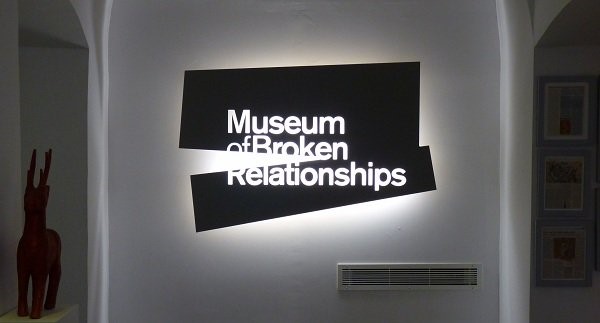
Let me tell you a story. Two artists met, fell in love and didn’t live happily together ever after. They decided to part ways amicably and wondered what to do with the left-over personal items that were a reminder of the love they once shared. No, they didn’t sing sad songs of yearning or hit the bottle with a vengeance or… A few years later, they started a collection of similar items – symbols of lost love and broken relationships.
The Museum displays the objects along with brief descriptions. They range from cute teddies to an axe! A lady had used the axe labelled as “ex-axe” to destroy her former lover’s furniture – just in case you are curious! Isn’t it quite therapeutic? 😉
The journey of the Museum
They took this travelling collection of donated items on a world tour, visiting Argentina, Bosnia and Herzegovina, Germany, Macedonia, the Philippines, Serbia, Singapore, Slovenia, South Africa, Turkey, the United Kingdom, and the United States. Along the way, it gathered new items donated by members of the public.
They then set up the Museum at a permanent location in Zagreb, Croatia. It was the city’s first privately owned museum. Tourists have since rated it very highly. In 2011 it received the Kenneth Hudson Award for Europe’s most innovative museum.
The museum believes that objects are actually “holograms” of memories and emotions. It intends to create a space for “secure memory” – a kind of catharsis for donors.
Later they opened another branch in Los Angeles, USA in the heart of Hollywood. They have closed this branch now. But you can still visit the Museum of Broken Relationships in Zagreb in case you feel the need to donate some of your “holograms”. Or you could simply check this unique concept out…
These are some of the places that you must-have in your itinerary, experience them and do things the Beyonder way. To make it simpler, you check out the sample Croatia itineraries here.
In case you are keen on experiential travel you can look for ideas and place to head to here https://beyonder.travel


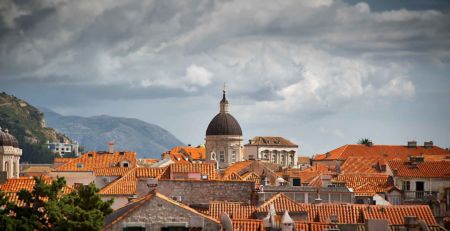

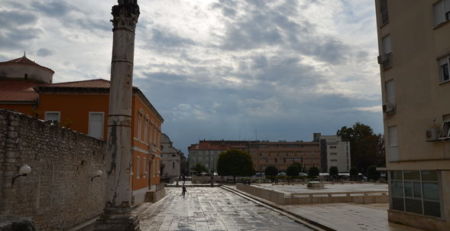
Leave a Reply